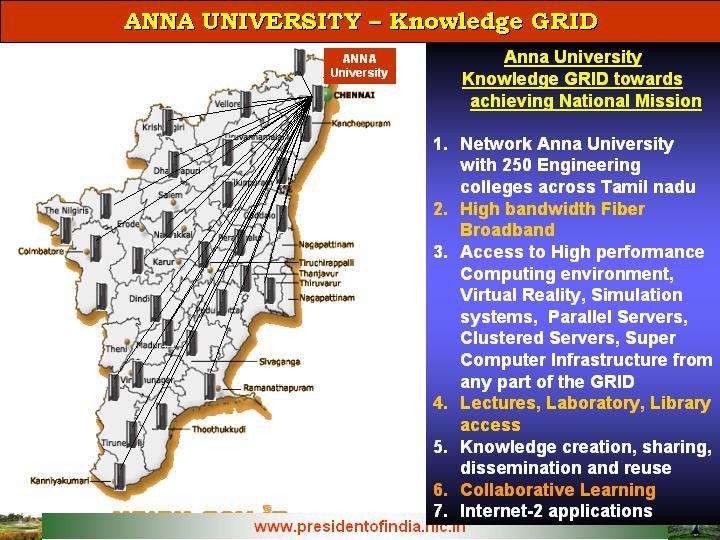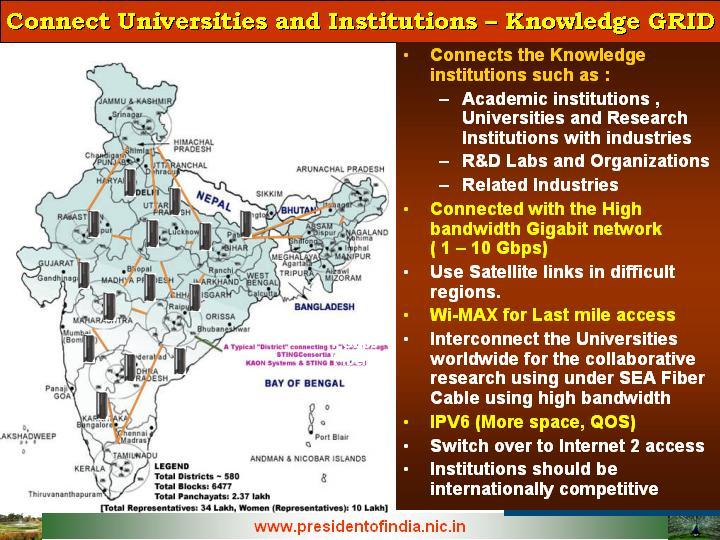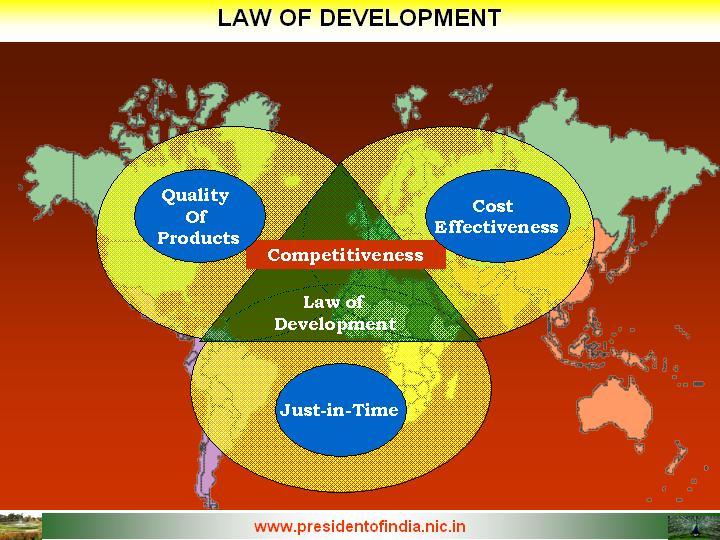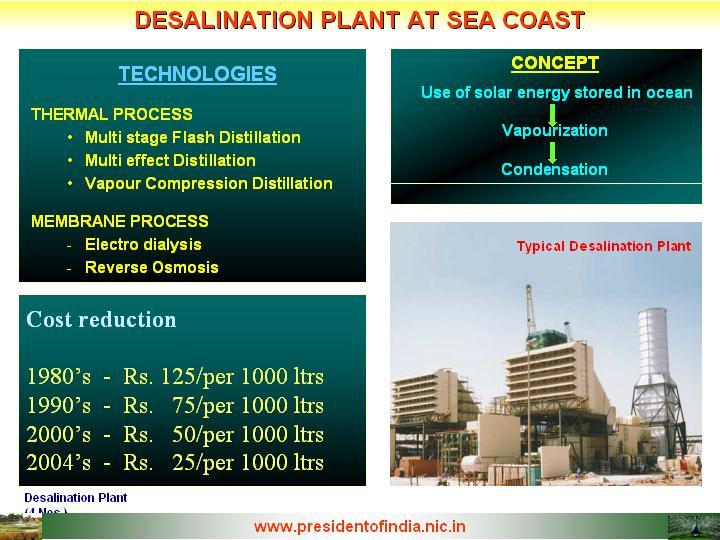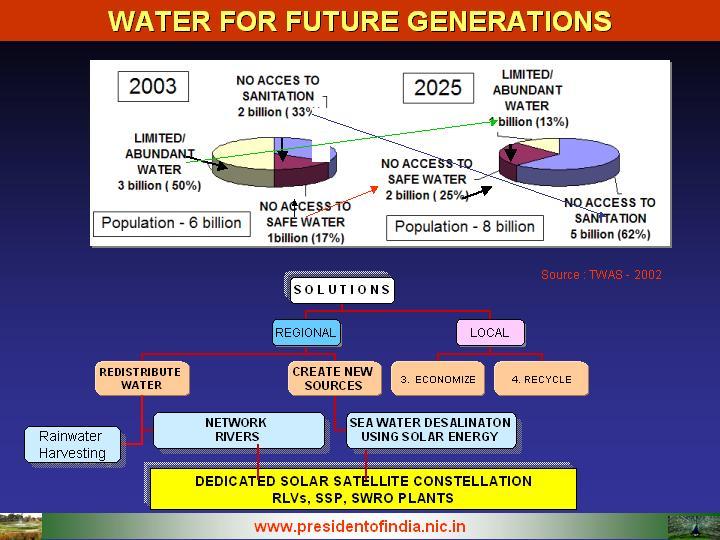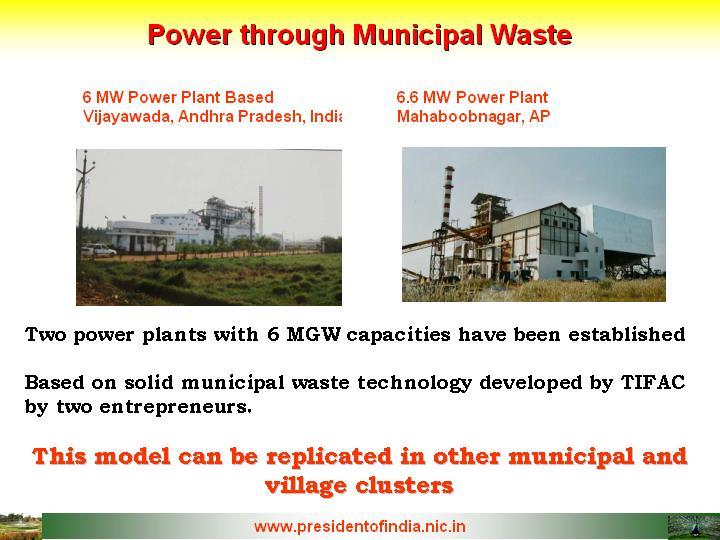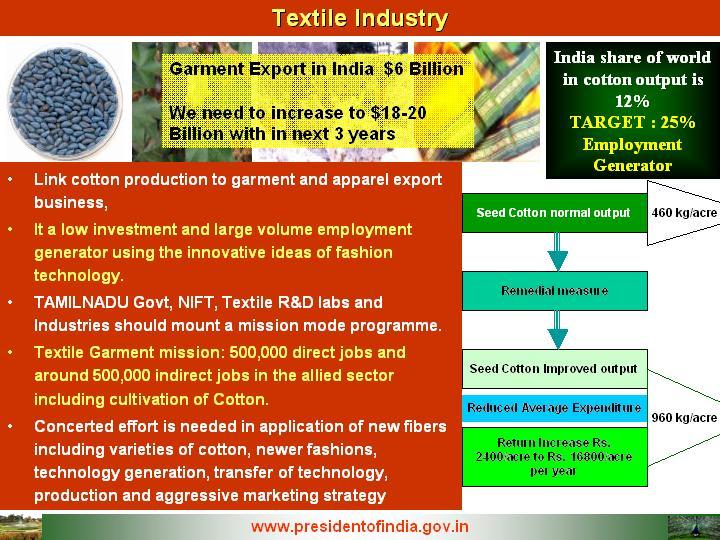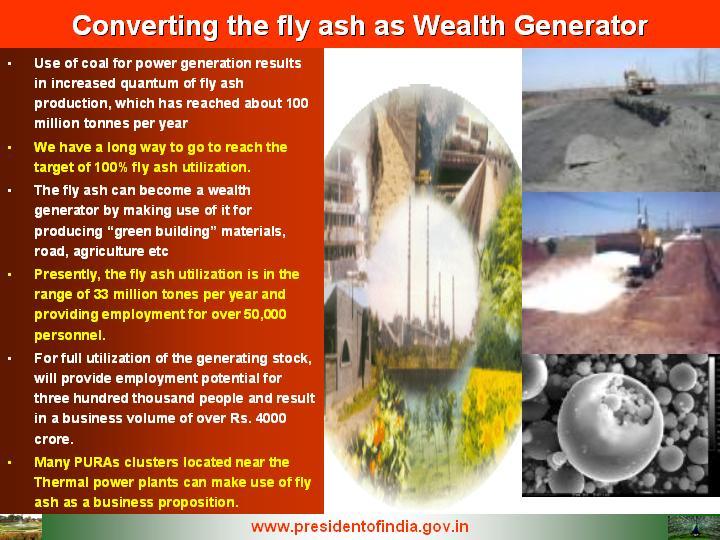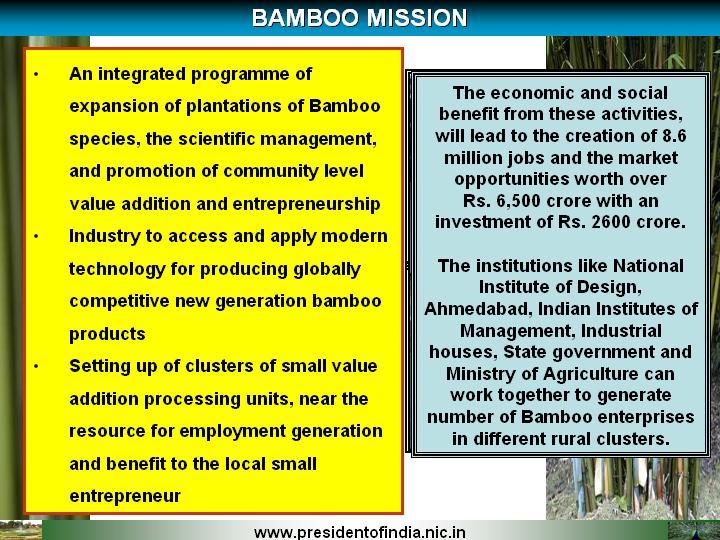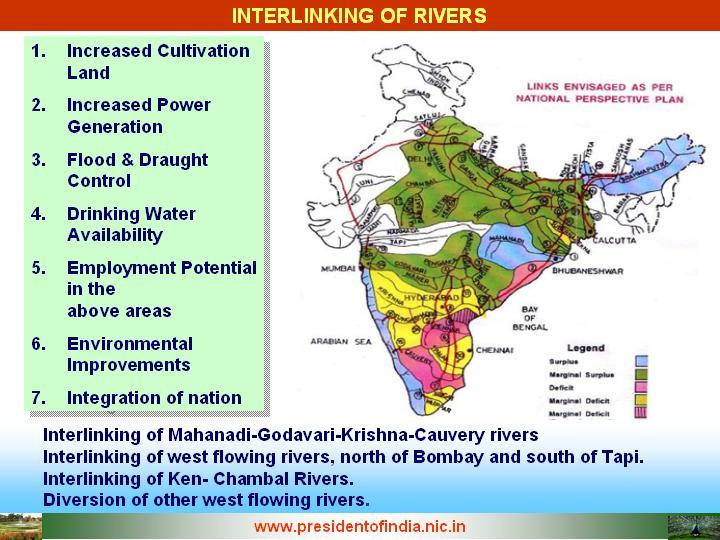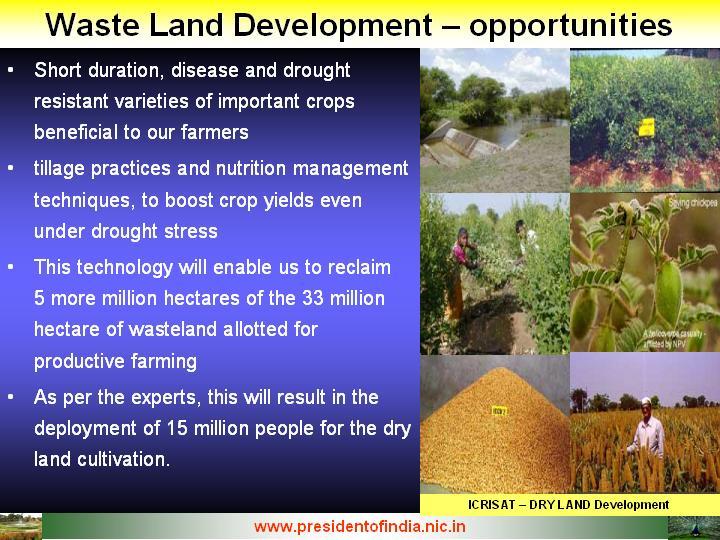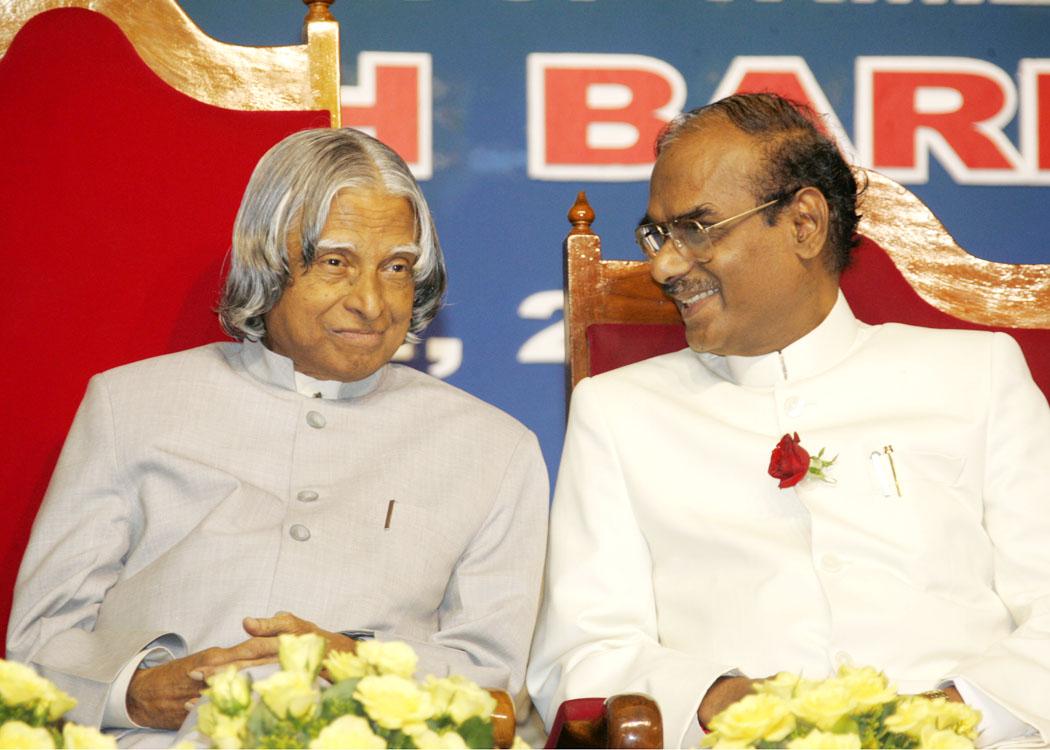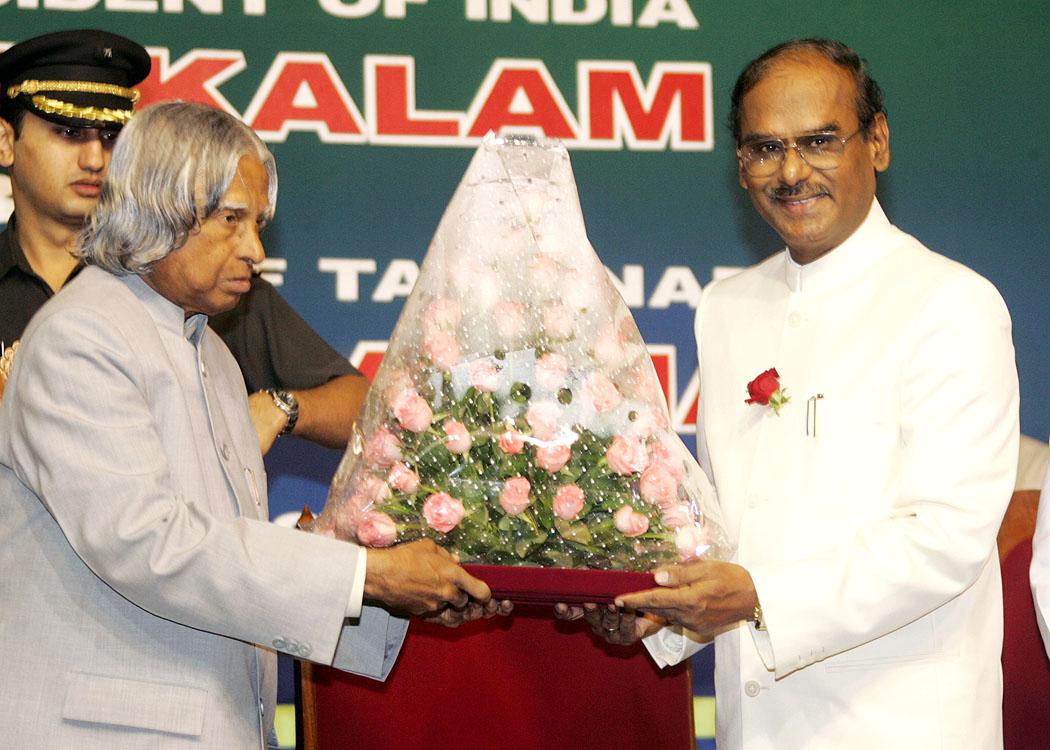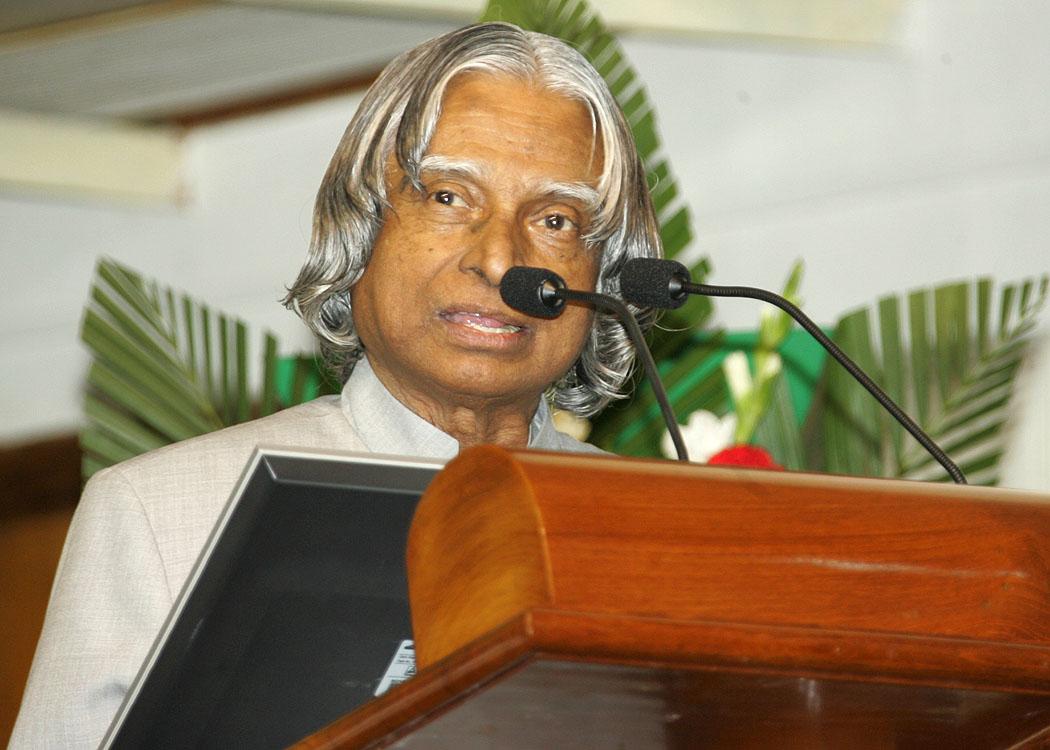Address On Technical Education And National Development At Anna University, Chennai
Chennai : 02-12-2005
Technical Education and National Development
I am delighted to meet and address the Principal and Chairman of all the Engineering Colleges of Anna University. My greetings to the Vice Chancellor, Chairmen of the Colleges and the Principals. Since you are all in the mission of technical education, I would like to discuss with you the topic 'Technical Education and National Development'.
Adding value to education through Entrepreneurship
There has been substantial growth in our higher educational system and we are generating over 3 million graduates every year and over seven million 10 and 10+ 2 level candidates who are aspiring for employment. However our employment generation system is not in a position to absorb all these youth leading to increase in educated unemployed, year after year. This situation will lead to instability in the social structure. We need higher education with employment potential that will create employment opportunities. A multi pronged strategy is needed to make education more attractive and simultaneously create employment potential - how do we do that?
Firstly, the educational system should inculcate by adding syllabus of entrepreneurship and prepare the students right from the school and college education to get oriented towards setting up of the enterprises which will provide them creativity, freedom and ability to generate wealth. Apart from entrepreneurship, the youth should have the spirit that "we can do it". Secondly, the banking system should provide venture capital right from every village level to the prospective entrepreneurs for undertaking new enterprises. Banks have to be proactive to support the innovative products for enabling wealth generation by young entrepreneurs. Thirdly, there is a need to identify marketable products and enhancement of purchasing power among the people. This can come through the implementation of mega programmes such as Providing Urban amenities in Rural Areas (PURA), Interlinking of Rivers, Infrastructural missions, Power missions and Tourism. The universities and schools should become a facilitator for creating this entrepreneurship scheme through the support of the banking system and the marketing system. This will enhance value to the education and create the motivation for the students. The universities and their colleges have a unique role in capacity building with students during their educational training period. I have made some study on the potential areas of employment which I have presented to the nation on 26 Jan 2005. Let me discuss with you.
Bio-fuel generation
We have nearly 63 million hectares of wasteland available in the country, out of which 33 million hectares of wasteland have been allotted for tree plantation. Certain multi-purpose bio-fuel plants can grow well in wasteland with very minimum input. Once cultivated, the crop has fifty years of life. Fruiting can take place in these plants in two years. Bio-fuel plants grown in parts of the waste land, for example, 11 million hectares, can yield a revenue of approximately Rs. 20,000 crore a year and provide employment to over 12 million people both for plantation and running of the extraction plants. It will reduce the foreign
exchange outflow paid for importing crude oil, the cost of which is continuously rising in the international market. The Bio-fuel is Carbon mono-oxide emission free. The oil can also be used for soap and in candle industries. De-oiled cake is a raw material for composting and the plantation is also good for honey production. We should absorb best of the technologies available worldwide and start commercial operation immediately. One time investment needed for bio-fuel plantation to production in 11 million hectares will be approximately Rs. 27000 Crores. The capital equipment and investment in plant and machinery can come from bank loans and private sector entrepreneurs. I have seen the progress in bio-fuel plant cultivation, preparation of seedlings, tissue culture and development of non-toxic hybrid varieties in Tamil Nadu Agricultural University, Coimbatore. They have also worked from processing of seeds to bio-fuel production by the indigenous design and development of bio-fuel plants. Anand Agriculture University at, Anand (Gujarat) has also made progress in the bio-fuel cultivation and processing in Gujarat. Bio-fuel plants can be grown in a number of states in the southern, western and central part of the country.
Waste Land Development - opportunities
ICRISAT with its international experience of working in arid regions, have developed short duration, disease and
drought resistant varieties of important crops beneficial to our farmers. They have introduced various tillage practices and nutrition management techniques, to boost crop yields even under drought stress. This technology will enable us to reclaim 5 more million hectares of the 33 million hectare of wasteland allotted for productive farming. As per the experts, this will result in the deployment of 15 million people for the dry land cultivation.
Interlinking of Rivers
The study programme of Networking of Rivers has
commenced. Already two states Madhya Pradesh and UP have agreed for linking of two of their rivers, and many further actions will follow. Also simultaneously a task team is in the process of evolving a national plan of linking rivers including the ecological enhancement plan. This mission will eliminate the periodical problem of drought and floods experienced in a number of river basin states and provide both water and power security. This programme will augment the existing Hydel power capacity. This will provide employment provision in all engineering sectors like civil, hydraulics, mechanical, electrical, remote sensing, system engineering, geology and environmental engineering particularly forests.
Bamboo Mission
This mission envisages an integrated programme of expansion of plantations of Bamboo species, the scientific management, and promotion of community level value addition and entrepreneurship. This will enable presenting the raw material for the industries and the industry to access and apply modern technology for producing globally competitive new generation bamboo products. This includes setting up of clusters of small value addition processing units, near the resource for employment generation and benefit to the local small entrepreneur. Processed raw material suitable for ultimate use in industry/handicraft sector will be required, for economizing handling cost of raw material to the location of industry proposed to be set up in different parts of the country.
The programme envisages the cultivation of bamboo over two million hectares and promotion of technology and networking for enhancing the trade. The economic and social benefit from these activities, will lead to the creation of 8.6 million jobs and the market opportunities worth over Rs. 6,500 crore with an investment of Rs. 2600 crore. We should use the management personnel, industrial experts and business houses to provide international market connectivity for our bamboo products leading to sustainable growth, wealth
generation and positive contribution to the growth of GDP. The institutions like National Institute of Design, Ahmedabad, Indian Institutes of Management, Industrial houses, State government and Ministry of Agriculture can work together to generate number of Bamboo enterprises in different rural clusters.
Converting the fly ash as Wealth Generator
As you are aware, the use of coal for power generation results in increased quantum of fly ash production, which has reached about 100 million tonnes per year. All out efforts are
needed to utilize this fly ash not only from environmental considerations, but also to avoid land usage for fly ash dumping. Though there has been a steady progress in fly ash utilization from 1990, we have a long way to go to reach the target of 100% fly ash utilization. It is reported that the agricultural increase of grains is around 15%, green vegetables 35% and root vegetables 50%, when fly ash is mixed with the soil. Toxicity tests have proved that there is no toxic element due to fly ash. But it has higher nutrients due to increased availability of iron and calcium. The fly ash can become a wealth generator by making use of it for producing ?green building? materials, road, agriculture etc. Presently, the fly ash utilization is in the range of 33 million tones per year and providing employment for over 50,000 personnel. For full utilization of the generating stock, will provide employment potential for three hundred thousand people and result in a business volume of over Rs. 4000 crore.
Textile industry
Textile industry is very important for the Indian economy. Tirupur and Coimbatore are important textile towns producing and exporting substantial amount of garments in the international market. Garment business is a low investment and large volume employment generator. India is presently, exporting six billion dollars worth of garments, whereas with the WTO regime in place, we can increase the production and export of garments to 18 to 20 billion dollars within the next five years. This will enable, generation of employment in general and in rural areas in particular. By tripling the export of apparels, we can add more than 5 million direct jobs in the country. Tamil Nadu can definitely be a major participant in this programme. For achieving this the Engineering Colleges are required to participate in Cotton research, technology generation, transfer of technology, modernization and upgrading of ginning and pressing factories
and aggressive marketing strategy.
Knowledge products for non-linear growth
In January 2005, the Indian IT industry reached a milestone of having more than one million software professionals employed by the industry. This number continues to grow. I must congratulate the industry for this growth in spite of worldwide reluctance on outsourcing. This shows the unquestionable quality of the Indian software
professionals and the fact that India is the best and the ultimate destination for all ICT related activities. It is also seen
that not only the number of personnel employed by the ICT industry has gone up, but also the revenue per capita has also increased. Now there is a need for the country to embark on development of knowledge products. The engineering institutions must build the capacity among our students to become partners in the development of knowledge products, apart from developing the skills required for the IT and IT enabled services. Within the next three years the employment in this sector is expected to go upto 2 million from the present One million.
Power through Municipal Waste
In the Power generation Sector of the energy economy, we need to fully use the technologies now available for generating power from municipal waste. Today, two plants are operational
in India, each plant generating 6.5 MW of electric power and many are in the offing in many places. Studies indicate that as much as 5800 MW of power can be generated by setting up 900 electric power plants spread over in different parts of the country which can be fueled by municipal waste. The electric power generation and creation of clean environment are the twin advantages. This is an area the engineering colleges can work for optimizing the briquette size, waste management, transportation, power generation and utilization.
Power System Loss Reduction
Apart from generating power and running power stations efficiently without interruption, it is equally essential to transmit and distribute the power with minimum loss. The loss of power in transmission and distribution in our country is currently in the region of 30-40% for a variety of reasons. Of about one thousand billion units of electrical energy produced annually, only 600 billion units reach the consumer. This is the result of transmission loss and unaccounted loss. We need to take urgent action to bring down this loss to 15% from 30-40% by close monitoring of the losses, improving efficiency, and increasing the power factor through modern technology.
By this one action alone we will be able to avoid the need for additional investment of around Rs. 70,000 crores for establishing additional generating capacity. Engineering institutions have an important role to play to find innovative methods by which the transmission and distribution losses are minimized. This should become one of the core topics for the electrical and mechanical engineering students and researchers in the university and college campus.
Global crisis of water
Today, with a global population of 6 billion only 3 billion have access to limited or perhaps the satisfactory supply of water. It is estimated that 33% of the world population has no access to sanitation and 17% has no access to safe water. But by 2025 the world population is going to rise to 8 billion but only one billion will have sufficient water. Two billion (25%) will have no access to safe water. Five billion (62%) will have
no access to sanitation water. We should collectively find a solution to this problem. The possible solutions are:
Research on desalination technology
India attaches importance to research and technological solution for various desalination processes. Fortunately Department of Atomic Energy, DRDO, CSIR and academic institutions are working in different processes for desalination whereas we should recognise that there are already operational plants elsewhere in the world.
Nuclear Desalination Demonstration Project (NDDP) at Kalpakkam has demonstrated the safe and economic production of good quality water by desalination of seawater comprising of 4500 cubic meter per day Multistage Flash (MSF) and 1800 cubic meter per day Reverse Osmosis (RO) plant. The plants can be scaled up to 10 times from the present configuration with out any difficulty. The Department of Ocean Development has established a One lakh litre per day desalination plant using Low Temperature Thermal Desalination process at Kavarati, in Lakshadeep.
The design of the hybrid MSF-RO plant to be set up at an existing nuclear power station is another solution. The MSF plant based on long tube design requires lesser energy. The effect on performance of MSF plant due to higher seawater intake temperature is marginal. The preheat RO system part of the hybrid plant uses reject cooling seawater from MSF plant. This allows lower pressure operation, resulting in energy saving. The two qualities of water produced are usable for the power station as well as for drinking purposes with appropriate blending. The post treatment is also simplified due to blending of the products from MSF and RO plants.
Another approach is the use of dual-purpose plants, where the desalination plant is connected to an electricity plant, utilising the waste heat from the electricity plants run by nuclear energy. I understand, under favourable conditions, dual-purpose plants decrease the cost of desalinated water below those of conventional desalination methods, primarily through energy conservation. I would also suggest the engineering colleges to undertake research projects on desalination process using solar energy which is abundantly
available in the country throughout the year. This may become an important infrastructural requirement within the next decade because it will be cost effective.
So far I have discussed the areas of importance in our national development missions and their relevance to engineering education. Now I would like to discuss about Law of development and competitiveness.
Law of development: Competitiveness
Last two years, I was studying the development patterns and the dynamics of connectivity between nations, especially in trade and business. As you all know the world has few developed countries and many developing countries. What is the dynamics between them and what connects them? Developed country has to market their products in a competitive way to different countries to remain as developed country. The developing country to get transformed into developed country; they too have to market their products to other countries in a competitive way. Competitiveness has three dimensions: quality of the product, cost effectiveness and supply in time. Indeed this dynamics of competitiveness in marketing of products by developing and developed countries is called the law of development. Our engineering institutions have to concentrate on developing the innovative ability among the students which can facilitate production of competitive products by the industry through constant application of technology and innovation. Also Anna
University Colleges may appreciate that as large number of engineering seats are available students have a choice of selection based on the teaching quality, laboratory facilities above all research capacities. Research in any academic institution enhances the teaching capacity . In view of that each college may like to review and have a vision to build a institution with best teachers, labs, and research capabilities.
Conclusion: Knowledge Grid
The three phases of learning are the lectures, library and laboratories. They require increasing bandwidth from a few 100?s of kilobytes for the lectures to a few megabytes for the formal digital libraries and the informal world of knowledge
from the Internet, to gigabits of connectivity for remote laboratories in the world of high precision science and engineering. As the bandwidth becomes cheaper and available in abundance, universities should be able to run remote instruments and facilities as complex as Nuclear Magnetic Resonance(NMR), Wind tunnels and 2M diameter infrared telescope in remote hilly regions. This will ultimately provide
equitable access to the entire education system beyond just the lectures and the lecturers. Thus the bandwidth is the demolisher of imbalances and a great leveler in the knowledge society. Particularly for Anna University with its constituents
of around 250 engineering colleges, establishment of knowledge grid is essential. This connectivity today technologically is possible but would need creation of high band width reliable network infrastructure to the extent of minimum 10 Gigabits per second all through the country to provide uniform access of knowledge in different regions.
We have rich knowledge institutions but what we have to add is connectivity. Knowledge Grid consists of connectivity between the constituent colleges of Anna University, knowledge creation, knowledge sharing, knowledge dissemination and knowledge reuse. Promoting excellence in the education system will need creation of world class educational institutions. This will involve formulation of innovative methods by which information and knowledge are accessed fast for meeting the demands of national challenges pertinent to your academic and research and development activities.
My best wishes to all of you for success in the mission of creating capacities among the engineering students who will make a prosperous, happy and strong nation.
May God bless you.

